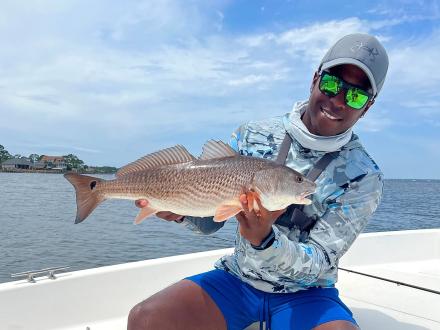Inshore fishing in Florida is a beloved pastime, offering anglers the chance to catch a variety of species such as redfish, snook, and speckled trout. With the right techniques and knowledge, you can make the most of your inshore fishing trips. Here are some essential tips to help you succeed in Florida’s inshore waters.
Understanding the Inshore Fishing Environment
Florida’s inshore waters include bays, estuaries, and the shallow coastal areas where many fish species thrive. Understanding the local environment is key to successful fishing.
- Tides and Currents: Tides play a significant role in inshore fishing. Fish are more active during tide changes, particularly during incoming and outgoing tides. Study tide charts and plan your trips around these times for the best chances of success. Additionally, strong currents can concentrate fish in specific areas, such as around points, channels, and drop-offs.
- Water Temperature: Water temperature affects fish behavior. In colder months, fish tend to move to deeper waters or areas with warmer temperatures, such as near power plants or springs. In warmer months, they might seek shade or deeper waters to avoid the heat.
- Weather Conditions: Overcast days often provide better fishing conditions, as fish are less wary in lower light. On the other hand, bright sunny days can push fish into shaded areas or deeper waters, so adjust your strategy accordingly.
Choosing the Right Gear and Bait
The right gear and bait can make a significant difference in your fishing success.
- Light Tackle Setup: Inshore fishing typically requires light to medium tackle. A 7-foot rod paired with a 3000-4000 series spinning reel is a versatile choice for inshore species. Use a braided line for its strength and sensitivity, with a fluorocarbon leader for stealth.
- Live Bait: Live bait, such as shrimp, mullet, and pinfish, is highly effective for inshore fishing. These baits mimic the natural prey of inshore species, making them irresistible. Hook the bait through the nose or back to allow for natural movement in the water.
- Artificial Lures: Artificial lures like soft plastics, topwater plugs, and spoons can also be effective, especially when fish are actively feeding. Match the lure’s color and size to the local baitfish to increase your chances of success.

Techniques for Inshore Fishing
Different techniques can be used depending on the conditions and target species.
- Sight Fishing: This involves visually spotting fish in shallow waters and casting your bait or lure in front of them. Polarized sunglasses are essential for reducing glare and improving visibility. Approach the fish quietly and cast gently to avoid spooking them.
- Drift Fishing: Drift fishing allows you to cover large areas of water, helping you locate where fish are congregating. Use the wind or current to drift your boat along a likely fishing area, casting your bait or lures ahead of the drift.
- Fishing Structure: Inshore species often gather around structures like docks, mangroves, oyster beds, and grass flats. Cast near these structures, as they provide shelter and food for fish.
Seasonal Tips for Inshore Fishing in Florida
The time of year can greatly influence your fishing strategy.
- Spring and Fall: These are prime seasons for inshore fishing, as many species are more active and closer to shore. Look for fish around flats and estuaries during these seasons.
- Summer: Fish early in the morning or late in the afternoon to avoid the heat. Focus on deeper channels and shaded areas during the hottest part of the day.
- Winter: Target deeper holes, channels, and areas with warmer water. Slow down your retrieval speed, as fish are less active in cooler temperatures.
Inshore fishing in Florida offers a diverse and exciting experience for anglers of all skill levels. By understanding the environment, choosing the right gear, and applying effective techniques, you can increase your chances of a successful and enjoyable fishing trip.
Image: gulfshores





